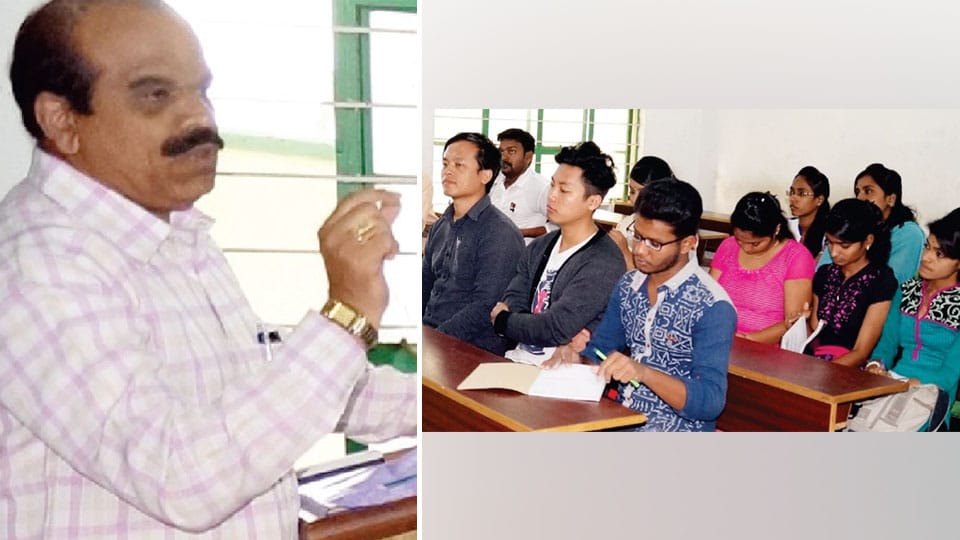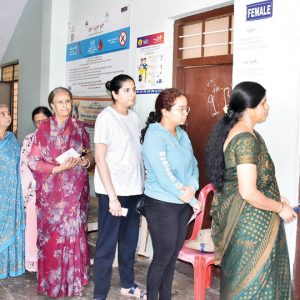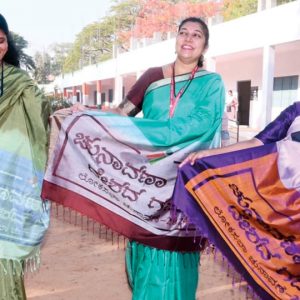Mysuru: “Do stones speak? Yes! They do speak to a historian,” said Prof. M.K. Mruthyunjaya, who spoke on the art and architecture of Hoysala period, at a lecture organised by the Department of History, SBRR Mahajana First Grade College, here recently.
Speaking on the importance of stones as a source of history, Prof. Mruthyunjaya, a retired Professor of History, Mirle Government College, said, “Stone inscriptions, murals and monuments chronicle the stories of war and many incidents of those times. They are a direct source of information of what happened and much more. Thus, they unravel known and lesser known facts.”
Elaborating on the Hoysala architecture, he said, “Of the many styles of Indian architecture, Hoysala style is the most important one among other styles such as Dravidian style, Naagara style, Vesara style etc.”
The most frequented tourist places Belur and Halebeedu house the temples, which speak volumes about the rich, intrinsic art apart from the skill of the talented sculptors, who have etched their name not only in history but also on the friezes, which a careful researcher can decipher.”
Prof. Mruthyunjaya pointed out that the temple architecture of the Hoysalas has its own unique features. They are built of blackish stone, popularly known as soapstone. The stellate or the star-shaped plan is an originality introduced by the Hoysala artists. The jagati or the platform that one notices in the Hoysala temples is usually three to four feet in height. The temple is built on a jagati bearing in mind that according to Hindu dharma the temple must be seen from a far off distance.
Another salient feature of the Hoysala temples is having pierced stone screens or windows, also called jalandhras. The main intention of these windows is to allow sufficient air and light into the interior of the temple. The bracket figures called by various names such as Salabhanjika, Madanikai, Puthali, Silabalika etc., are young damsels shown in various moods such as decorating, singing, dancing, hunting, talking to parrot etc., he said.
The Hoysala temples can be divided into five groups depending on the number of garbhagrihas they possess such as Ekakuta, Dvikuta, Trikuta, Chatushkuta and Panchakuta. Some of the well-known temples built during the rule of the Hoysala dynasty are: Cheluvanarayana Temple at Melukote, Lakshmivaradaraja Temple at Therakanambi, Somanatha temple at Arasikere and other places. Though most of the temples are Shivalayas, the Hoysalas encouraged building of Vaishnava Devalayas and Jaina Basidis, which is enough proof to say that people of different sects lived in religious harmony, said Prof. Mruthyunjaya.
Dr. Sridhar, Head of the Department of History, staff and students were present.








Recent Comments